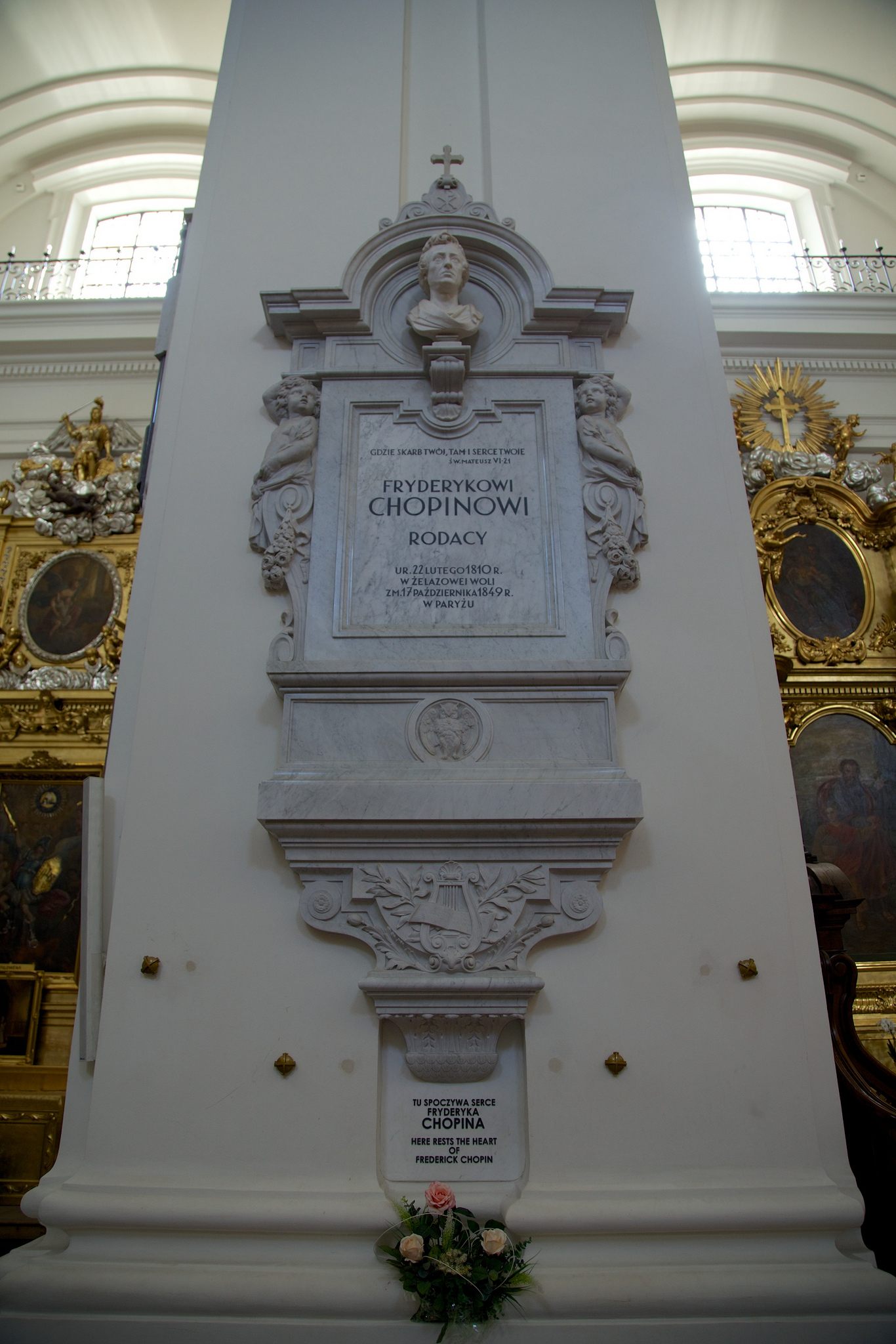Chopin’s Heart Exhumed for a Top Secret Check-Up
 Statue of Chopin in Warsaw, Poland (photograph by Fran Urbano/Flickr)
Statue of Chopin in Warsaw, Poland (photograph by Fran Urbano/Flickr)
Officials in Warsaw, Poland, have revealed a church-and-state secret plan to exhume the preserved heart of composer and national treasure Fryderyk Chopin — details are now surfacing months after the deed was carried out.
The great composer-pianist’s heart is the subject of one of the most astounding legends in music history. On his deathbed in Paris 1849, the story goes, Chopin whispered a final request to his sister: that his heart be removed from his body and returned to Warsaw. This not only assuaged his deep-rooted fear of being buried alive; it ensured that he would be reunited, body and soul, with his beloved birthplace (home is where the heart is, after all). He had not seen Poland for almost two decades, and it’s there whence the inspiration for his mighty polonaises and delicate mazurkas flowed.
Chopin’s famous “Funeral March” was played at his own ceremony at the Madéleine in Paris before his burial in the Père Lachaise Cemetery. Meanwhile, his sister went about making his dying wish a reality, pickling the vital organ in a syrupy substance believed to be cognac. She then smuggled her precious, gory cargo back to the motherland, where it passed into the hands of various relatives before being seized by the Nazis almost a century later. Its final resting place is the Basilica of the Holy Cross in Warsaw, within a pillar bearing the biblical inscription: “For where your treasure is, there your heart will also be”.
 Monument to Chopin’s heart in the Basilica of the Holy Cross in Warsaw (photograph by Markus Winkler/Flickr)
Monument to Chopin’s heart in the Basilica of the Holy Cross in Warsaw (photograph by Markus Winkler/Flickr)
One night in April this year, long after churchgoers had departed, thirteen individuals sworn to secrecy — including the Archbishop of Warsaw, the Polish minister for culture, and two scientific personnel — gathered in the church to exhume the heart after a forensic specialist raised concerns that the liquid preservative would evaporate, leaving the heart to dry out and darken. But according to officials, all is well. Around 1,000 photographs of the organ were made (though not circulated to press to avoid a grisly media circus), but no tissue samples were taken to clear up doubts surrounding cause of death: whether the master pianist succumbed to tuberculosis, as is commonly believed, or in fact suffered from cystic fibrosis, a disease not diagnosed during Chopin’s time.
The operation was carried out in cloak-and-dagger style in order to avoid uproar in Poland, where the national hero’s heart is considered a saintly relic.
According to the Associated Press, Chopin’s next check-up is scheduled for 50 years from now, 205 years after his death.
For more on Chopin’s posthumous wanderings, read about his immortal hands on Atlas Obscura >











Follow us on Twitter to get the latest on the world's hidden wonders.
Like us on Facebook to get the latest on the world's hidden wonders.
Follow us on Twitter Like us on Facebook